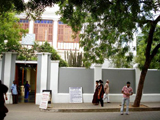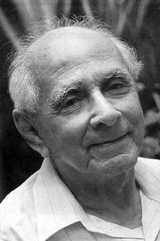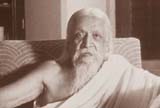Sleep
Physical marks appearing after injuries sustained in dreams
Editor’s note
Science is always full of surprises. Each theory is, in fact, a convenient framework to understand some observations and it works until we are surprised by new facts. One reason for these new observations is that our field of observation itself expands. Secondly, the scientific community and scientific mind is itself opening up to incorporate new ways of looking at the same phenomenon. In addition, the change in the model of physics whose footsteps medical science followed is inviting. Finally having searched the material box of the body we are still to find final answers to life’s riddle. All this is coming more and more to the front in the human quest. The following article is one such example which opens new doors of perception within us.
“There are more things in heaven and earth, Horatio,
Than are dreamt of in your philosophy.”(Hamlet)
First episode
Edward Kelly and his co-authors in their book Irreducible Mind refer to a couple of incidents (1). The first story was reported in the nineteenth century in the book Influence of the Mind on the Body written by an English physician, Daniel Hack Tuke. It concerns a man who dreamed that he had been hit on the chest by a stone and woke up to find a bruise on his chest. Here is the account from Tuke’s book:
“In the Bibliothèque choisie de Medecine, by Planque, tome vi. p. 103, is the following case: A man, thirty years of age, healthy and robust, saw in a dream a Pole with a stone in his hand, which he threw at his breast. The vivid shock awoke him, and then he found that there was on his chest (dans le même endroit) a round mark, having the appearance of a bruise. Next day there was so much swelling, etc., that a surgeon was requested to see it, who, fearing a slough, scarified the part, and relieved it. The wound healed in a short time. Without more definite information, it would not be safe to build a theory upon this case, but looking at the previous one of the spectre, and others equally well authenticated, there appears no reason to doubt that the dream and the inflammatory action of the skin stood in the relation of cause and effect (2).”
Second episode
Ian Stevenson reported the second case of an Indian man, Durga Jatav, who, while seriously ill with typhoid fever, had a vivid dream in which he thought he had died and discovered that his legs had been cut off by some people in the “other realm”. After recovering, he was found to have scars on his knees which persisted for many years. These scars were photographed by Stevenson and appear in his book [see (3)]. This is the bizarre account of that man:
“Durga Jatav, a man approximately 50 years old, was interviewed in November, 1979, and again 3 months later. About 30 years before, he had been ill for several weeks, suffering from what had been diagnosed as typhoid. When his body ‘became cold’ for a couple of hours, his family thought he had died. He revived, however, and on the third day following this he told his family he had been taken to another place by 10 people. He had tried to escape, but they had then cut off his legs at the knees to prevent him from doing so. He was taken to a place where there were tables and chairs and 40 or 50 people sitting. He recognized no one. They looked at his ‘papers’, saw that his name was not on their list, and said, ‘Why have you brought him here? Take him back.’ To this Durga had replied, ‘How can I go back? I don’t have feet.’ He was then shown several pairs of legs, he recognized his own, and they were somehow reattached. He was then sent back with the instructions not to ’stretch’ (bend?) his knees so that they could mend. (Durga’s older sister, who was also interviewed, corroborated his account of his apparent death and revival.)
Durga’s sister and a neighbour noticed a few days after he revived that marks had appeared on his knees; there had previously been no such marks there. These folds, or deep fissures, in the skin on the front of Durga’s knees were still visible in 1979. There was no bleeding or pain in the knees other than the discomfort engendered by Durga’s following the ’instructions’ to keep his knees in a fixed position. X-ray photographs that we had taken in 1981 showed no abnormality below the surface of the skin. Durga had not heard of such experiences before his own near-death experience. He did not see his physical body from some other position in space. He said that afterward the experience seemed like a dream; nevertheless, he claimed that it had strengthened his faith in God.
One informant for this case (the headman of the village where Durga lived) said that at the time of Durga’s experience another person by the same name had died in Agra (about 30 km away); however, neither Durga nor his older sister were able to confirm this statement (4).”
Durga Jatav’s disquieting tale of after-death processing in which someone looked at his papers and concluded that they had brought the wrong man seems outlandish, but it bears some resemblance to the ‘spirits of death’ outlined by the Mother, Mirra Alfassa in a talk given on 1st July 1953:
“It is said that there is a god of Death. Is it true?
“Yes, I call it the spirit of Death. I know it very well. And that is an extraordinary organisation. You do not know to what an extent it is organised.
I believe there are many of these spirits of death, I believe there are hundreds. I have met at least two of them. One I met in France and the other in Japan, and they were very different; which leads one to believe that probably in accordance with the mental culture, the education, the country and beliefs there should be different spirits. But there are spirits of all the manifestations of Nature: there are spirits of fire, spirits of air, of water, of rain, of wind; and there are spirits of death.
Each spirit of death, whatever it may be, has a claim to a certain number of deaths per day. Indeed it is a fantastic organisation; it is a kind of alliance between the vital forces and the forces of Nature. For example, if the spirit of death has decided: ‘That is the number of people to which I am entitled’, let us say four or five or six, or one or two persons, it depends on the day; it has decided that certain persons would die, it goes straight and settles down beside the person about to die. But if you happen to be conscious (not the person), if you see the spirit going to a person and you do not want him to die, then you can, if you possess a certain occult power, tell it: ‘No, I forbid you to take him.’ It is a thing that has happened, not once but several times, in Japan and here. It was not the same spirit. That is what makes me say that there must be many.
— I don’t want him to die.
— But I have a right to one death!
— Go and find someone who is ready to die.
So I have seen several cases: sometimes it is just a neighbour who dies suddenly in place of the other, sometimes it is an acquaintance and sometimes it is an enemy. Naturally, there is a relation, good or bad, of neighbourhood (or anything else) which externally looks like chance. But it is the spirit who has taken its dead. The spirit has a claim to one death, it will have one death. You can tell it: ‘I forbid you to take this one’, and have the power of sending it away, and the spirit can do nothing but go away; but it does not give up its due and goes elsewhere. There is another death (5).”
Third episode
The third story comes from the Sri Aurobindo Ashram and was reported by Amal Kiran (K.D. Sethna), a disciple of Sri Aurobindo and the Mother. His wife Sehra woke up after a nightmare and was found to have sustained injuries which seemed related to her dream. This is the account as given by Amal Kiran:
“The time was a little after 2 a.m. on 19 December 1978. I happened to be awake in bed. In the bed across the room Sehra started moaning very piteously. I thought she was doing so in sleep, as on some occasions she had done during a nightmare. As she went on moaning, I spoke loudly to her and then got up and touched her so as to rouse her from sleep.
“She answered: ‘Someone has attacked me with a stick and beaten me on my head.’ I said: ‘It’s only a bad dream. Don’t worry.’ But she complained of severe pain in the head and shouted to our servant Lakshmi who was sleeping in the next room. I said: ‘There is no need to wake her. Tell me what you want.’ She went on shouting for Lakshmi. I called out also and Lakshmi came in.
“Before this I had switched on the light. When Lakshmi came, I pulled back from Sehra’s head the counterpane which had been over it. The sight before our eyes was horrible. Above the upper ridge of the left eye there was a huge ugly lump and a swelling along the bone between the eye and the ear. In the middle of the lump was a point where the skin seemed slightly abrased: it was a reddish spot as if the stroke of the stick had especially fallen there.
“What we saw was unbelievable. How could a beating received on the head in a dream have such a strong physical effect? I have read accounts in journals of occultism in which people getting hurt in dreams showed visible marks. The Mother also has in one place spoken of the body showing signs of mishaps experienced in a dream. But never had I witnessed such a consequence and never could I have imagined that so concrete and severe an injury to the body might appear as the result of a nightmare.
“If I had not been absolutely sure that Sehra had not got up and fallen somewhere, I would not have believed a nightmare had hurt her so grievously. But here was no room for doubt. She had not got up at all after she had been to the bathroom just before retiring at about 10.30 p.m. on the night of the 18th. Besides, if she had fallen in the bathroom or on the way to it or back from it she would have cried out from that place and not from under her counterpane in bed. I could at once have known — and so would Lakshmi or her daughter who early that night had been sleepless and later asserted that she had not heard Sehra go to the bathroom any time after 10.30 or so. Again, our bathroom door creaks very loudly whenever opened or closed and is likely to wake up anyone who is not too heavy a sleeper. It is quite certain from my own evidence as well as from that of others that the terrible hurt was received during a nightmare.
“…While drinking her coffee, she recalled that she had started dreaming of going to meet the Mother. Before she could proceed she was crossed by some being and dealt a blow with a stick. The blow was aimed at her head and meant to break it. Somehow it was diverted to the area of the left eye and it landed on the temple above it.
“…I may end by striking a spiritually optimistic note. When I had an occasion to relate the incident to Huta (an Ashram resident), she suddenly lighted upon an implication I had not guessed. I had seen only the frightful possibility of hostile blows having more and more gross-physical consequences. I had not let my mind appraise all round the critical point at which the workings behind the scene might have arrived. But she exclaimed: ‘What has happened shows that the Divine Force also can now have a direct effect upon the body. If the dark powers have this new possibility, the inner Light and the higher Consciousness can just as well emerge into the body with concrete changes in it if we are truly receptive (6)!’”
Human beings have subtle sheaths which interpenetrate the physical body, all of which are composed of the same stuff of ‘consciousness’ but with varying density. During dreams, the subtle body detaches from the physical body and sojourns into the occult worlds. The incidents reported above illustrate that blows hurled by occult entities at the subtle body can be transmitted onto the physical body. In Sri Aurobindo’s words:
“It is a mistake to think that we live physically only, with the outer mind and life. We are all the time living and acting on other planes of consciousness, meeting others there and acting upon them, and what we do and feel and think there, the forces we gather, the results we prepare have an incalculable importance and effect, unknown to us, upon our outer life. Not all of it comes through, and what comes through takes another form in the physical – though sometimes there is an exact correspondence; but this little is at the basis of our outward existence. All that we become and do and bear in the physical life is prepared behind the veil within us (7).”
References
1. Kelly, E., Williams, E., Crabtree, A., Gauld, A., Grasso, M., Greyson, B. Irreducible Mind: toward a psychology for the 21st Century. Lanham, Maryland; Rowman & Littlefield, 2006.
2. Tuke, D. H. Illustrations of the influence of the mind upon the body in health and disease, designed to elucidate the action of the imagination. Philadelphia; H.C. Lea’s Son & Co., 1884, p. 286.
3. Stevenson, I. Reincarnation and biology: a contribution to the etiology of birthmarks and birth defects, Vol. 1. New York; Praeger, 1997, pp. 76-78.
4. http://www.near-death.com/hindu.html Retrieved Mar 19, 2001.
5. The Mother. Collected Works of the Mother, Vol. 5. Pondicherry; Sri Aurobindo Ashram Trust, 1976, p. 136-7.
6. Sethna, K.D. Our Light and Delight. Pondicherry; Andhra Bhavan Press, 1980, pp. 204-6.
7. Sri Aurobindo. SABCL, Vol. 23. Pondicherry; Sri Aurobindo Ashram Trust, 1970, pp. 993-4.
Sandeep Joshi is a computer engineer currently living in the India. He writes an Integral Yoga blog at http://www.auromere.wordpress.com
Share with us (Comments, contributions, opinions)
When reproducing this feature, please credit NAMAH, and give the byline. Please send us cuttings.






